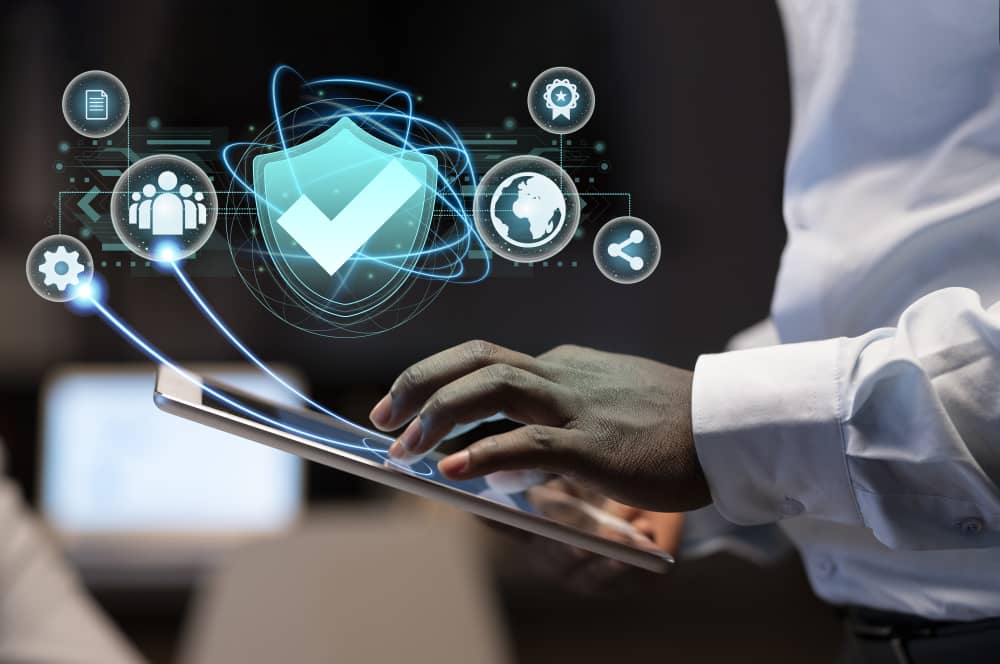Journalism practice and processes has evolved to become mostly digital activities, most journalists’ workflow— information gathering, processing and dissemination— begins and end on digital platforms using a smartphone computer and/or other digital gadgets. This reality has helped journalists reduce physical safety and security concerns.
However, the digital space is not devoid of its threats and safety concerns, from attack on personal reputation and identity to cyber bullying to identity theft, cyber attacks and cyber-enabled attacks, journalists still need to protect themselves from digital security and safety threats.
Here are five simple tips for journalists to ensure their digital safety and security.
- Responsible Digital Activity: While many journalists try as much as possible to be security conscious in their physical environment, avoiding volatile events and locations and keeping to various security codes they throw caution to the wind in their online activities. Providing Personally identifiable information, engaging in volatile online conversations and falling victims of simple social engineering tricks like applying for online giveaways or unverified opportunity calls. This is one of the ways journalists make themselves vulnerable to online attacks. As a practitioner of a sensitive profession journalists need to keep to international best practices for online activities to prevent them from being vulnerable threats.
- Digital Asset protection: From your digital gadgets to your online accounts and even social media accounts need to be well guarded. A lot of journalist do not take simple device security protocols like passwording and privacy as serious as they should. Some do not even employ multifactor authentication for their online accounts, some use easy-to-crack passwords. Journalists needs to not only use best practices for their digital asset protection but advocate for their associates and loved ones too to use in order to further safeguard themselves. Protection techniques ike:
- Using Complex password that features several characters of not only alphabets and numerals but also unique symbols, and not using the same password for many accounts.
- Using biometric security like fingerprint and facial recognition.
- Employing 2-Factor or Multi-Factor Authentication on online accounts like Gmail and other Google Workspace apps, WhatsApp, X, Facebook, Zoom, LinkedIn etc.
- Periodic review of password security and employing password managing apps or platforms for keeping passwords.
- Use of reputable and strong Virtual Private Network(VPNs) for safe and secure browsing.
[READ ALSO: Quick Gen AI prompting lesson for journalists]
3. Application Use and Responsibility: This is to capture the idea that journalists need to be very responsible in the choice of applications they download on their gadgets and their use of it. Downloading phony apps or joining illegal platforms, perhaps for a promised benefit, shouldn’t be the lot of a journalist, just as journalists also need to be conversant with the privacy terms and policies of the application they use. Another common habit born out of negligence is updating downloaded apps. The periodic updates of applications provides improved security from identified threats by their manufacturer so downloading updates to apps as they are released is imperative for assured security.
4. Information Access Control: There are several information security techniques relevant to professionals like journalists, one of the most important ones is access control. Journalists deal with sensitive information that needs to be protected from unwanted eyes, controlling the access to this information is important. Journalist must be able to make access to the sensitive information they deal with need and permission-based. This can be achieved through establishment and implementation of strict information sharing policy and the use of controlled team and/or level-based access, encryption and other data protection techniques. Secure messaging on platforms with valid end-to-end encryption also helps prevent interception and ensure information security.
[READ ALSO: Journalists urged to prioritise their health amid stressful work conditions]
5. Back-Up: Backing up does not only ensure recovery of lost information and sustained availability it can also be instrumental to the breakthrough of a journalist or media houses. Backed up information from key investigation can be the last resort and saving grace during a delicate situation.
There are now many easy ways to back up information manually or automatically. Simple file or folder cloud storage syncing or audio and call recording service provider and many other similar service. One Key practice in information Back-Up is the 3-2-1 rule.
The 3-2-1 Rule is a data protection strategy that recommends having three copies of your data, stored on two different types of media, with one copy kept off-site.
The rule prescribes:
- Maintain three copies of your data, one original data and at least two copies.
- Use two different types of media for storage. It can be physical or cloud storage.
- Keep at least one copy off-site. This off-site location is separate from your primary data and on-site backups.


